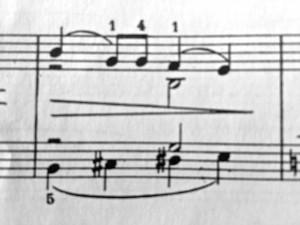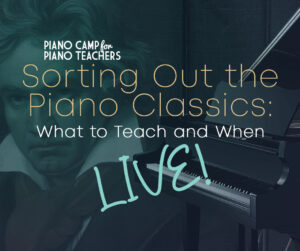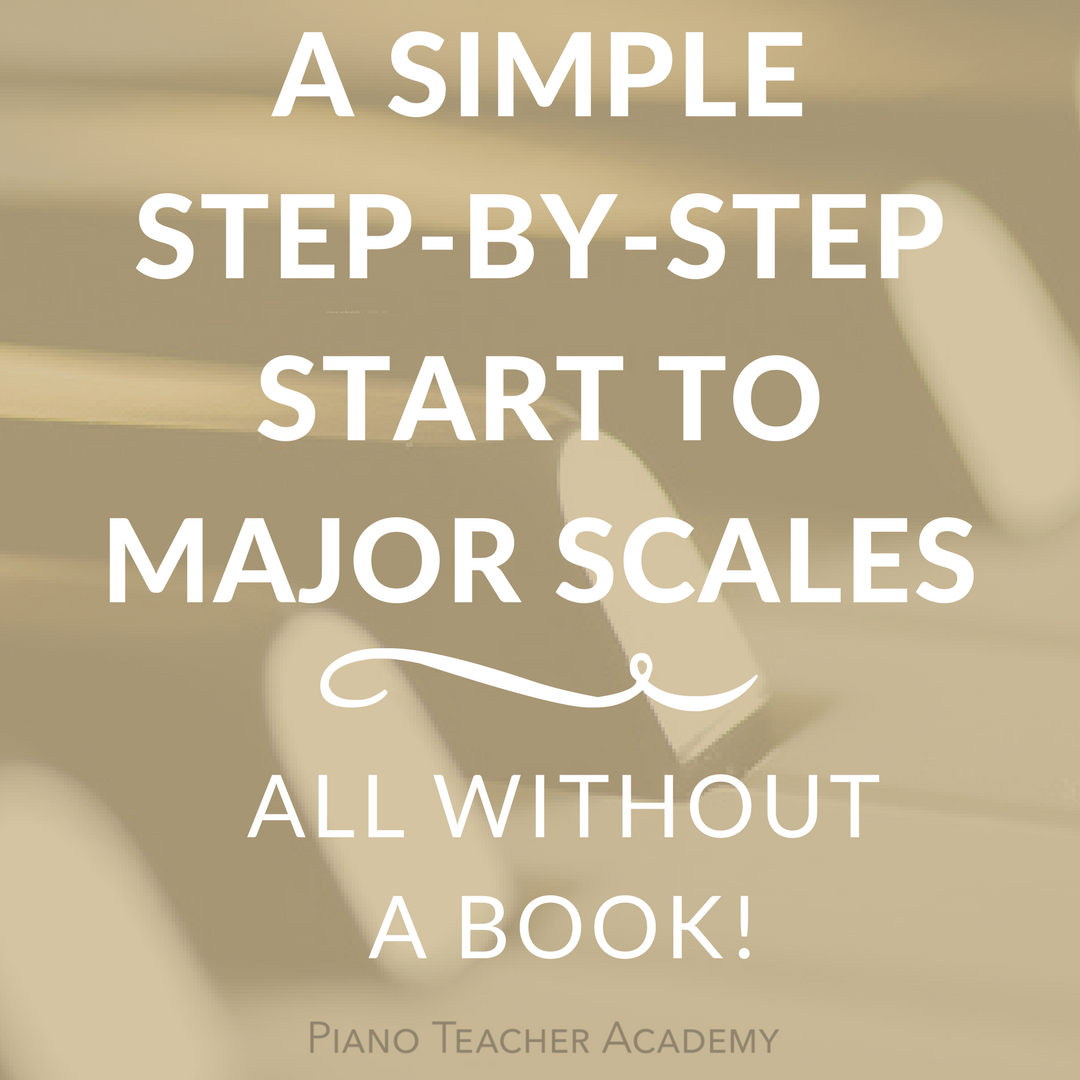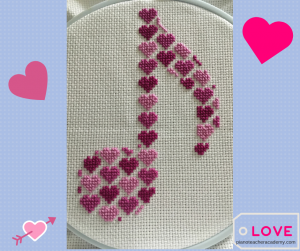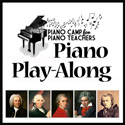Bartok, For Children Vol. I, Play-Along: Post Three (Nos. 16 – 20 Reaction)
We’re back in action! If you haven’t started the Bartok Play-Along as of this date (Jan. 16, 2015) – no worries! You may certainly start here OR start studying/playing the pieces from the beginning post and work your way to this point. Please always play along at your own pace and be sure to ADD COMMENTS or ask a question about any Bartok blog post ANYTIME. I’d LOVE to hear what your thoughts are regarding these VERY interesting gems!Quick-scan observations about Nos. 16-20 :
- These pieces are solidly EI to I (Early Intermediate to Intermediate) in level at this point in the collection.
- Part-writing (2 or more voices in one hand) adds to the complication.
- Bartok continues to use a variety of tempos, simple meters, and simpler key areas in major and minor, and other modes as well. A dash of chromaticism adds color.
- He continues to indicate sophisticated fingering and pedaling markings to achieve an intended effect like sostenuto, legato, and so forth.
- All 5 pieces utilize a good range of the keyboard with the hands usually an 8ve apart and at times, 2 8ves apart.
- Bartok is quite specific about sound. Heavy use of dynamics here, including hairpin cresc. and dim. effects.
- Notice the use of repeated notes in these 5 pieces, especially at the ends of phrases. Interesting.
No. 16 – Old Hungarian Tune
Impressions While Playing: Sounds like a chant, don’t you think? The use of repeated notes and short phrases lend to that feeling. Certainly it’s a Hungarian melody of some sort given the title, but I’m not sure if it’s a folk song (vocal) or folk tune (instrumental). The 4-voice choral texture makes it less “pianistic” than some of the previous pieces in the set.
Teaching Value: This would not be one of my “go-to” Bartok pieces for student performance, but it would make an excellent piece for sight reading (4 voices at once). I hear a mix of modes here which would make it less predictable for the student who is reading the piece.
Take Note: There’s a very strange pedal marking in m. 7 (both early and late editions):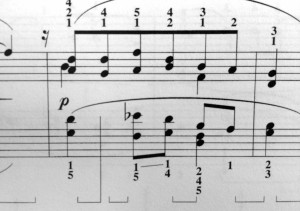 My assumption is that Bartok wanted to be sure the player knew to release the pedal on the 2nd half of beat 1 and place the foot down immediately after.
Also, did you notice the eighth rest sitting above the bar line at the ends of mm. 4 and 8?:
My assumption is that Bartok wanted to be sure the player knew to release the pedal on the 2nd half of beat 1 and place the foot down immediately after.
Also, did you notice the eighth rest sitting above the bar line at the ends of mm. 4 and 8?: 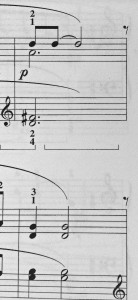 My guess is that this is Bartok’s clever way to telling the performer to take time between these particular measures, and while doing so stressing the idea of 4-measure phrases.
Recommended For: A student who has already had experience in part-writing and double-note playing.
Correlates To: Faber Level 4 or later, unless the student has already studied a good deal of classical piano selections with 3 or 4 voices. (Int.)
My guess is that this is Bartok’s clever way to telling the performer to take time between these particular measures, and while doing so stressing the idea of 4-measure phrases.
Recommended For: A student who has already had experience in part-writing and double-note playing.
Correlates To: Faber Level 4 or later, unless the student has already studied a good deal of classical piano selections with 3 or 4 voices. (Int.)
No. 17 – Round Dance
Impressions While Playing: Rather lonesome-sounding E minor melody. This is a simple theme with variation form with a two-measure interlude in mm. 9 and 10. Bartok seems to prefer this small variation form for his short pieces. The melody is mostly in 5-finger position and contains a fair amount of repeated notes within. The LH adds nice depth as it jumps in octave. Given Bartok’s tempo indication, it seems slow for a dance, but maybe it involved swaying movements or large gestures of some sort.
Teaching Value: Bartok was particular about the shaping of the phrases with all the hairpin swells (cresc. and dim. marks). This offers the student a great opportunity to work on tone and nuance.
Take Note: The LH becomes more elaborate in the variation section(mm. 11- end), but did you notice that every time a dim. mark is written, there is collectively more notes to play in both hands and more rhythmic activity as well? Tricky to execute. See the LH of mm. 12,14, 16, and 18 as examples.
Recommended For: A student who has explored a good bass range in the LH and has a fairly good reach for the LH blocked 7ths.
Correlates To: Faber Level 3B or later (E. Int. to Int.)
No. 18 – Soldier’s Song
Impressions While Playing: The dotted rhythms give it a military-like feel and the forte and mezzo-forte dynamics lend to the resonant character (sonoro). It sounds somewhat like a fanfare with all the long chords, slow-moving harmonies, and use of pedal. It is interesting that the tonal center is D Major despite the fact that Bartok uses the keysignature of G Major.
Teaching Value: I think this would make a great study in “sonority” as indicated in m. 1. Each melodic phrase directs itself to the final note of the phrase. The harmonies support this idea.
Take Note: Did you notice the key signature in the treble clef?
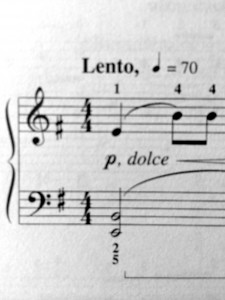 The F# is not in its usual place. Perhaps it’s a clever move by Bartok to inform students that the only F# in the piece is on the bottom space (see mm. 17 and 19).
The F# is not in its usual place. Perhaps it’s a clever move by Bartok to inform students that the only F# in the piece is on the bottom space (see mm. 17 and 19).
Note also the “attacca” at the end of the piece, leading into the untitled No. 19.
Correlates To: Faber Level 3B or later (Int.)
No. 19 – Untitled (Allegretto)
No. 20 – Drinking Song
SCROLL to 6:46 to listen to No. 20
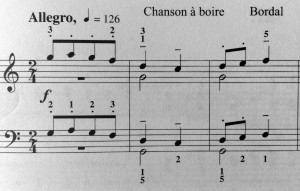 This uncommon phrase grouping doesn’t sound or feel awkward at all.
This uncommon phrase grouping doesn’t sound or feel awkward at all.
Notice also how the LH accompaniment changes each time a theme is repeated (except for mm. 13 – 18). I like how Bartok includes a parentheses indication for omitting the octave stretch in the LH of mm. 11 and 17.
This pieces leads with an attaca to No. 21… stay tuned for that next week!
Correlates To: Faber Level 3B or later (Early Int.)
***FInal Thoughts: None of 5 above are well-known selections from Volume 1, with the exception of No. 17 which I hear occasionally and see in collections. Curious….were any of these particularly striking to you?
